McDonalds Supply Chain: Key Insights Revealed!
The McDonalds supply chain is a fascinating and intricate network that plays a crucial role in the company’s success as one of the world’s leading fast-food giants. From sourcing quality ingredients to ensuring food safety and sustainability, McDonald’s has established a robust supply chain that adapts to the changing demands of consumers and the global market.
With an emphasis on ethics, environmental responsibility, and economic viability, the company collaborates with various suppliers to meet its strict standards for quality and consistency. By leveraging technology and innovative practices, McDonald’s is streamlining its operations and addressing challenges such as climate impact and food waste.
Table of Contents
McDonald’s Complex Supplier Network
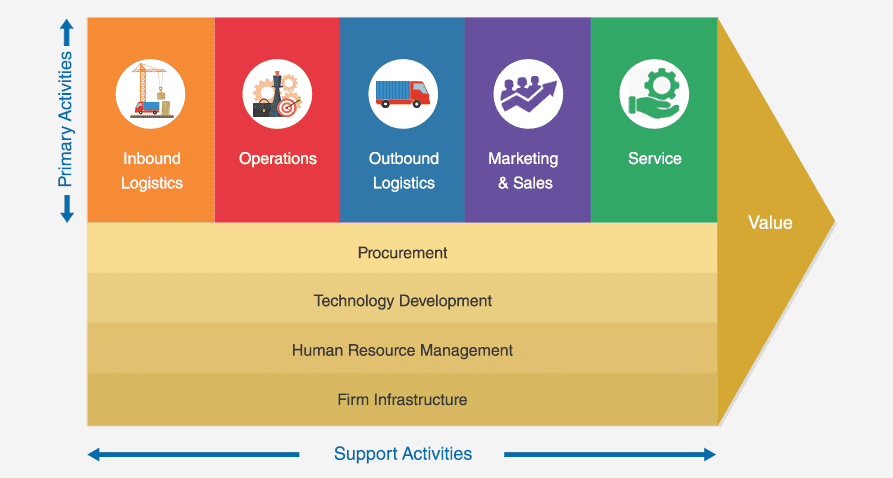
| Supplier Category | Description | Role in Operations |
| Direct Suppliers | Companies that manage the purchasing and distribution of products directly to restaurants. | Handle logistics and supply chain management. |
| Indirect Suppliers | Entities that operate grain mills and abattoirs, providing raw materials. | Supply essential ingredients like meat and grains. |
| Farms and Ranches | Sources of key ingredients such as cattle, wheat, and lettuce. | Provide fresh produce and protein for menu items. |
| Distribution Centers | Facilities that coordinate purchasing and distribution, ensuring timely delivery of products to restaurants. | Essential for managing inventory and logistics. |
| Special Vehicles | Temperature-controlled transport vehicles used for product delivery. | Maintain product quality during transportation. |
| Processing Facilities | Facilities where finished goods like beverages, buns, and meat patties are produced. | Ensure the availability of menu items at restaurants. |
| Quality Standards | McDonald’s stringent requirements for product quality and safety. | Ensure consistency and reliability in food quality. |
Role of Distribution Centers and Specialized Transportation
| Aspect | Details |
| Role of Distribution Centers | Backbone of McDonald’s supply chain; coordinates purchasing and distribution of products to restaurants. |
| Systems Used | Advanced systems to ensure smooth operations and logistics. |
| Transportation Vehicles | Specialized vehicles equipped with temperature-control mechanisms. |
| Quality Maintenance | Ensures freshness of transported products, including beverages and meat patties. |
| Delivery Consistency | Relies on meticulous processes to maintain product quality. |
| Route Optimization | Routes are optimized for timely deliveries to reduce delays. |
| Driver Training | Drivers receive specialized training to handle food products according to McDonald’s standards. |
| Quality Standards | Each delivery meets stringent quality standards set by McDonald’s. |
| Integration of Elements | Synergy between distribution centers and specialized transport is essential for efficient operations. |
| Customer Impact | Ensures a high-quality experience for customers, serving millions daily. |
Sustainable Supply Chain Initiatives
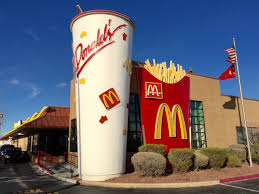
McDonald’s is committed to a sustainable supply chain, focusing on the three E’s: ethics, environment, and economics. The company collaborates with suppliers to ensure ethical sourcing practices, reducing the environmental footprint. Farms work to minimize water usage, protecting vital water resources. Distribution centers aim to reduce carbon emissions through efficient logistics. Packaging is designed to be recyclable, cutting down on waste.
McDonald’s also works on forest conservation projects, preserving natural habitats. Innovative farming techniques are encouraged to enhance productivity while being eco-friendly. Animal welfare policies are strictly enforced, aligning with sustainable practices. By leveraging technology, McDonald’s tracks and optimizes resource use. This approach ensures that sustainability is integrated at every supply chain level.
Animal Welfare Policies
| Aspect | Details |
| Animal Welfare Policy | McDonald’s prioritizes animal welfare with strict supply chain standards. |
| Cruelty Policy | Zero-tolerance for animal cruelty, ensuring humane treatment of animals. |
| Chicken Sourcing | All chickens used globally are raised in cage-free systems; no chickens from caged housing facilities are accepted. |
| Supplier Compliance | Suppliers must adhere to rigorous welfare policies aligned with McDonald’s ethical commitments. |
| Antibiotic Use | Farms and ranches implement practices to reduce antibiotic use in food animals. |
| Transport Practices | Pre-slaughter transport times are minimized to reduce animal stress. |
| Slaughterhouse Audits | Slaughterhouses are audited annually to ensure compliance with best practices for animal welfare. |
| Continuous Improvement | Collaboration with suppliers to continuously improve animal welfare practices across the supply chain. |
| Commitment to Standards | Measures reflect McDonald’s dedication to maintaining high animal welfare standards at every stage of the supply chain. |
Environmental Impact Reduction
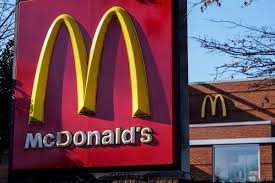
| Category | Practice | Description |
| Water Usage | Advanced Irrigation Systems | Farms minimize water usage through efficient irrigation. |
| Energy Efficiency | Energy-Efficient Technologies | Distribution centers use technologies to reduce emissions. |
| Recycling | Focus on Packaging Materials | Recycling is integral to minimize waste in packaging. |
| Ecosystem Preservation | Forest Conservation Projects | Supports initiatives to preserve ecosystems. |
| Sustainable Farming | Adoption of Sustainable Methods | Suppliers enhance soil health through eco-friendly practices. |
| Renewable Energy | Increasing Use of Renewable Sources | Renewable energy sources are utilized across the supply chain. |
| Waste Reduction | Initiatives to Limit Waste | Aims to reduce food and packaging waste significantly. |
| Logistics Optimization | Innovative Delivery Systems | Optimizes routes to save fuel and reduce emissions. |
| Collaboration | Partnerships with Industry Experts | Works with experts to develop greener solutions. |
| Continuous Improvement | Commitment to Sustainability | Dedicated to improving sustainability practices consistently. |
Economic Sustainability
McDonald’s economic sustainability initiatives ensure long-term livelihoods for farmers and suppliers. Collaborating closely with suppliers, the company focuses on research and sharing best practices. This increases productivity and efficiency across its supply chain. McDonald’s prioritizes protecting land and livestock to maintain a steady supply. Additionally, the Flagship Farmers program highlights successful supplier practices.
This program promotes innovative and sustainable farming methods. Economic viability is crucial for meeting the company’s high standards. McDonald’s also aligns its efforts with the United Nations’ sustainable development goals. These goals aim to reduce hunger and promote decent work. By fostering strong partnerships, McDonald’s ensures economic growth in its supply chain. They work on innovative solutions to challenges faced by suppliers. This approach helps safeguard the future of their supply chain.
Ensuring Food Safety
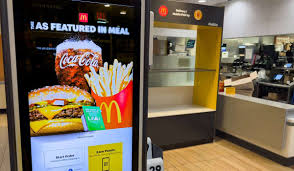
Ensuring food safety is a top priority for McDonald’s. Robust procedures protect the public and mitigate risks. Suppliers have traceability programs to track food origins. For instance, Lamb Weston traces fries back to the potato farm. The Food Safety Advisory Council offers strategic leadership on safety matters. Employees undergo continuous training on food safety protocols. Suppliers participate in these programs and share best practices.
Technological advancements like blockchain enhance traceability and transparency. This technology ensures accountability across the supply chain. McDonald’s rigorous standards aim to avoid food safety issues. Past incidents like those faced by Chipotle highlight the importance of these measures. Suppliers must meet stringent requirements to ensure product safety. Regular audits and inspections maintain these high standards. The synergy between suppliers and McDonald’s ensures top-notch food safety.
Maintaining Consistency in Quality and Standards
| Aspect | Details |
| Quality Consistency | Essential for all products at McDonald’s. |
| Ingredient Standards | Specific requirements for texture, color, and freshness. |
| Supplier Guidelines | Strict adherence to guidelines set by McDonald’s. |
| Quality Checks | Routine and stringent checks to ensure compliance with standards. |
| Technology Utilization | Advanced technology monitors production parameters to maintain quality. |
| Automated Systems | Used to track various production metrics. |
| Regular Audits | Conducted to reinforce adherence to standards. |
| Supplier Training | McDonald’s provides training on best practices to suppliers. |
| Collaboration | Fosters mutual understanding of quality expectations between McDonald’s and suppliers. |
| Continuous Improvement | Supported by constant communication and feedback between McDonald’s and suppliers. |
| Overall Goal | Ensures that every customer enjoys a consistent high-quality experience with each meal. |
Minimizing Supply Chain Disruptions
| Strategy | Description |
| Supplier Diversification | Sources products from multiple suppliers across various geographies to reduce dependence on any single supplier. |
| Generic Raw Materials | Uses generic materials that facilitate easy switching between suppliers when needed. |
| Advanced Forecasting Tools | Implements forecasting tools to anticipate and manage potential disruptions effectively. |
| Real-time Monitoring | Utilizes digital platforms for real-time supply chain monitoring, allowing for quick responses to issues. |
| Supplier Relationships | Builds relationships based on trust and collaboration, ensuring open communication during crises. |
| Contingency Plans | Develops plans for unforeseen events to maintain consistent operations. |
| Technology and Strategic Planning | Leverages technology and strategic planning to keep the supply chain resilient and efficient. |
Investing in the Future of the Restaurant Industry
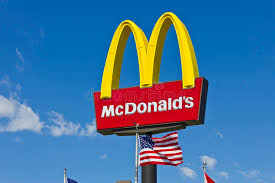
McDonald’s recognizes the importance of investing in the future of the restaurant industry. The company continuously adapts to consumer needs by staying ahead of market trends. It focuses on developing new menu items that cater to evolving tastes. These innovations include healthier options and plant-based alternatives.
Additionally, McDonald’s invests in digital solutions to enhance the customer experience. Mobile apps and self-service kiosks streamline ordering and payment processes. This technological integration improves service speed and efficiency. McDonald’s also collaborates with tech startups to explore cutting-edge solutions.
By fostering innovation, the company aims to remain competitive and relevant. Sustainability investments are equally crucial, focusing on eco-friendly packaging and energy-efficient practices. McDonald’s forward-thinking approach ensures it meets the demands of future generations.
Adapting to Global Supply Chain Challenges
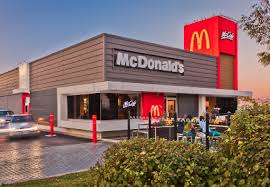
| Challenge/Strategy | Description |
| Global Regulations & Cultural Differences | McDonald’s navigates diverse regulations and cultural norms worldwide. |
| Geopolitical Risks | The company faces additional complexity due to geopolitical risks affecting operations. |
| Advanced Analytics | Utilizes analytics to forecast potential supply chain disruptions. |
| Supplier Diversification | Diversifies supplier base to mitigate risks associated with supply chain disruptions. |
| Cross-Functional Collaboration | Teams from different functions work together to address supply chain issues swiftly. |
| Digital Platforms for Visibility | Employs technology for real-time supply chain visibility, enabling quick adaptations. |
| Seasonal Ingredient Management | Carefully manages seasonal variations in the availability of ingredients. |
| Supplier Evaluation | Evaluates suppliers based on their ability to meet global standards. |
| Local Sourcing Investment | Invests in local sourcing to reduce dependency on international shipments. |
| Proactive Measures | Implements proactive strategies to ensure resilience amid changing supply chain conditions. |
Frequently Asked Questions
How does McDonald’s ensure food safety in its supply chain?
McDonald’s ensures food safety through robust procedures, including traceability programs that track food origins. Regular audits and advanced technology like blockchain enhance transparency and accountability across the supply chain.
What measures does McDonald’s take to reduce its environmental impact?
McDonald’s minimizes water usage, reduces carbon emissions, and promotes recycling. The company also supports forest conservation projects and adopts energy-efficient technologies throughout its supply chain.
How does McDonald’s maintain quality and consistency in its products?
McDonald’s maintains quality and consistency through strict guidelines for texture, color, and freshness of ingredients. Suppliers undergo routine quality checks, and advanced technology monitors production parameters to ensure adherence to these standards.
What steps does McDonald’s take to ensure animal welfare?
McDonald’s enforces a zero-tolerance policy for animal cruelty and requires all chickens used globally to be raised in cage-free systems. Suppliers must follow rigorous welfare policies, including minimizing pre-slaughter transport times and reducing antibiotic use in food animals.
Conclusion
McDonald’s supply chain is a remarkable blend of efficiency and innovation. The company’s commitment to sustainability, quality, and animal welfare sets it apart. Through strategic partnerships and advanced technology, McDonald’s ensures a consistent and reliable supply of high-quality ingredients. Its proactive approach to addressing global challenges showcases its adaptability. McDonald’s meets and often exceeds industry standards, reflecting its dedication to excellence.
The company’s ongoing efforts to minimize environmental impact demonstrate a forward-thinking mindset. As McDonald’s continues to evolve, its robust supply chain will remain a cornerstone of its success. This meticulous orchestration allows McDonald’s to serve millions daily, maintaining the trust and satisfaction of its customers. The future holds promising advancements as McDonald’s strives to innovate and lead in the fast-food industry.





